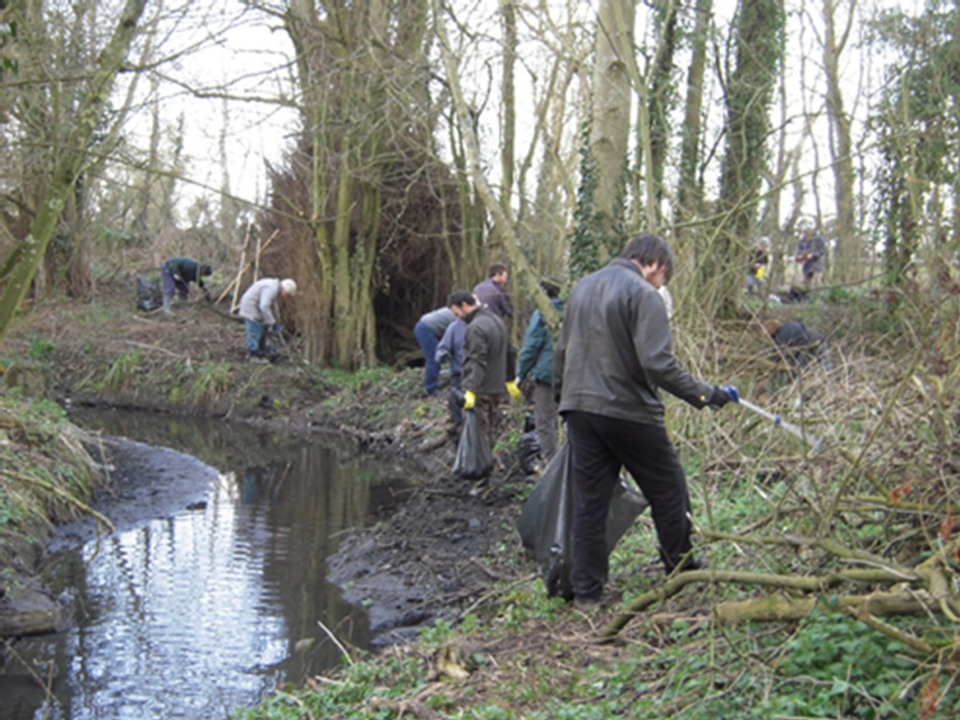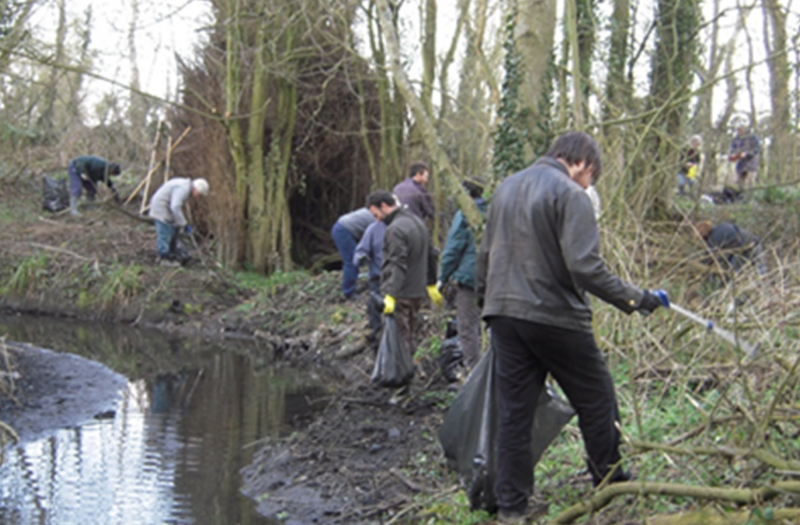Water and Integrated Local Delivery (WILD) project

The Water with Integrated Local Delivery (WILD) project is a facilitation-based initiative that seeks to develop a broad-based partnership to meet a range of policy priorities, centred on the Water Framework Directive (WFD), to improve the water and land-based environments.
The project areas covers of 26,000ha in the central part of the Upper Thames catchment that forms the headwaters of the Thames river basin in central and southern England. The catch-ment includes stretches of the River Thames extending from its source south-east of Cirences-ter at Kemble, to Lechlade where watercourses from the plateau of the Cotswolds join the clay lowlands around Swindon.
The geology of the Upper Thames catch-ment is dominated by limestone that provides significant groundwater resources and the aquifers within the catchment have been classified into the Water Framework Directive (WFD) groundwater bodies. The area contains a wide variety of habitats and landscapes and provides high quality game and coarse fishing in both rivers and still waters. Some watercourses are stocked by their owners and angling associations, to supplement wild stock levels. Most of the area is rural and dominated by farming (72%), with woodland under 10%. Arable land use makes up 43% of the catchment, 29% is grassland and a further 15% is urban including Swindon, Cirencester and smaller market towns. The whole Upper Thames catchment has been designated a Nitrate Vulnerable Zone (NVZ) since 2002. Agricul-ture is the main land use in the catchment and this does impact on the water environ-ment. Similarly there is an impact from both industry and new and existing housing developments as well as associated infrastructure such as roads and sewage.
According to the Thames River Basin Plan (Defra 2016) the Significant Water Management Issues in the Upper Thames catchment concern both point source and diffuse pollution from agriculture and urban developments. Other issues causing concern are the physical modifications to the river channel, invasive non-native species and erratic water flow.
34 case studies were planned by the H2020 PEGASUS project in different farming and forest systems and along the supply chain in 10 EU countries, to:
- examine the issues faced in ensuring effective provision of public goods/ecosystem services from farming & forest activities; and
- find solutions to enable the economic social and environmental sustainability of the EU’s farmed & forest areas.
The Water and Integrated Local Delivery (WILD) uses a facilitation-based approach to meet Water Framework Directive objectives. The project has built a lasting multi-stakeholder partnership bringing farmers and local communities together to provide economic and social benefits.
The resource system is at the headwaters of the Thames river basin, where integrated delivery of WFD objectives are being delivered through partnership and facilitation through new and existing networks. The resource unit underpinning these discussions is water, in terms of water quality, its ecological status, and issues around flooding, which encompasses discussions on soil, urban development and land management.
There is a national regulatory framework that has been adjusted locally for WFD and the WILD partnership. Advice and engagement covers regulation, Common Agricultural Policy greening, cross-compliance, Agri-Environment Support schemes in combination with WFD and local flooding issues. Identified ‘Farmer Guardians’ work with agencies and project partners to promote sustainable land management. A Payment for Ecosystem Services scheme developed with water company to reduce chemical pollutants in water. Partnership seen as a shared problem-solving network.
- The Integrated Local Delivery framework is a tried and tested approach and this increases the level of confidence amongst stakeholders in the project.
- Involvement of both the private sector and public bodies working alongside local advisors and facilitators has strengthened the project and built up communication and trust.
- The partnership has been able to translate EU regulations so that they are applicable and can be co-implemented.
- Incorporating a research partner from the local university helped secure engagement and promotes knowledge exchange among all partners.
- Providing contact points amongst the community such as the farmer guardian network promotes accountability.
Barriers to overcome include persistence among some stakeholders to pursue single issue actions to ‘get the job done’ rather than engage in wider discussions and difficulty in engaging with the large multi-national gravel extraction businesses which operate locally but have little if any connection to the local community. The potential of forestry has not been fully realised but progress on management is being made. Long-term evidence that the integrated local delivery approach provides positive changes.
Water issues are key: WFD, flooding, drinking water, sewage infrastructure, development. Farmers critical of regulation and inspection approach, communities feel unable to resolve water issues due to complex arrangements for ditch and watercourse management. Facilitation and engagement are crucial, as are personalities: current WILD project lead is respected by farming community, Gloucester Rural Community Council is respected by local communities. Evidence of increased understanding on some issues e.g. upstream and downstream impacts of action, importance of soil and impact of coordinated action. WILD is about engagement, communication, knowledge, consistency and trust. Key aspects are presence of facilitator, willingness of agency to ‘stand-back’ and engage with a wide a range of stakeholders.
